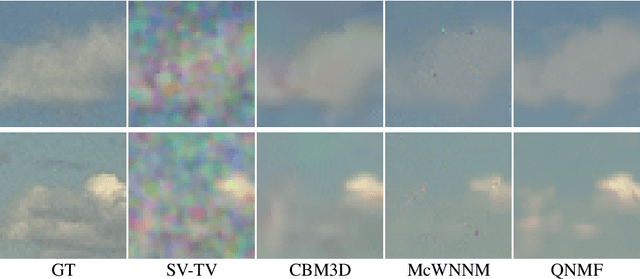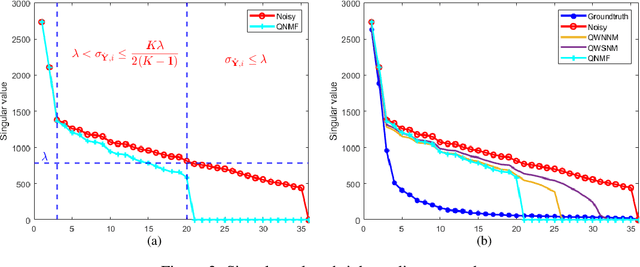Yu Guo
GReDP: A More Robust Approach for Differential Privacy Training with Gradient-Preserving Noise Reduction
Sep 18, 2024Abstract:Deep learning models have been extensively adopted in various regions due to their ability to represent hierarchical features, which highly rely on the training set and procedures. Thus, protecting the training process and deep learning algorithms is paramount in privacy preservation. Although Differential Privacy (DP) as a powerful cryptographic primitive has achieved satisfying results in deep learning training, the existing schemes still fall short in preserving model utility, i.e., they either invoke a high noise scale or inevitably harm the original gradients. To address the above issues, in this paper, we present a more robust approach for DP training called GReDP. Specifically, we compute the model gradients in the frequency domain and adopt a new approach to reduce the noise level. Unlike the previous work, our GReDP only requires half of the noise scale compared to DPSGD [1] while keeping all the gradient information intact. We present a detailed analysis of our method both theoretically and empirically. The experimental results show that our GReDP works consistently better than the baselines on all models and training settings.
Quaternion Nuclear Norm minus Frobenius Norm Minimization for color image reconstruction
Sep 12, 2024



Abstract:Color image restoration methods typically represent images as vectors in Euclidean space or combinations of three monochrome channels. However, they often overlook the correlation between these channels, leading to color distortion and artifacts in the reconstructed image. To address this, we present Quaternion Nuclear Norm Minus Frobenius Norm Minimization (QNMF), a novel approach for color image reconstruction. QNMF utilizes quaternion algebra to capture the relationships among RGB channels comprehensively. By employing a regularization technique that involves nuclear norm minus Frobenius norm, QNMF approximates the underlying low-rank structure of quaternion-encoded color images. Theoretical proofs are provided to ensure the method's mathematical integrity. Demonstrating versatility and efficacy, the QNMF regularizer excels in various color low-level vision tasks, including denoising, deblurring, inpainting, and random impulse noise removal, achieving state-of-the-art results.
* This paper was accepted by Pattern Recognition on September 5, 2024
Real-Time Multi-Scene Visibility Enhancement for Promoting Navigational Safety of Vessels Under Complex Weather Conditions
Sep 02, 2024



Abstract:The visible-light camera, which is capable of environment perception and navigation assistance, has emerged as an essential imaging sensor for marine surface vessels in intelligent waterborne transportation systems (IWTS). However, the visual imaging quality inevitably suffers from several kinds of degradations (e.g., limited visibility, low contrast, color distortion, etc.) under complex weather conditions (e.g., haze, rain, and low-lightness). The degraded visual information will accordingly result in inaccurate environment perception and delayed operations for navigational risk. To promote the navigational safety of vessels, many computational methods have been presented to perform visual quality enhancement under poor weather conditions. However, most of these methods are essentially specific-purpose implementation strategies, only available for one specific weather type. To overcome this limitation, we propose to develop a general-purpose multi-scene visibility enhancement method, i.e., edge reparameterization- and attention-guided neural network (ERANet), to adaptively restore the degraded images captured under different weather conditions. In particular, our ERANet simultaneously exploits the channel attention, spatial attention, and reparameterization technology to enhance the visual quality while maintaining low computational cost. Extensive experiments conducted on standard and IWTS-related datasets have demonstrated that our ERANet could outperform several representative visibility enhancement methods in terms of both imaging quality and computational efficiency. The superior performance of IWTS-related object detection and scene segmentation could also be steadily obtained after ERANet-based visibility enhancement under complex weather conditions.
* 15 pages, 13 figures
BiGS: Bidirectional Gaussian Primitives for Relightable 3D Gaussian Splatting
Aug 23, 2024Abstract:We present Bidirectional Gaussian Primitives, an image-based novel view synthesis technique designed to represent and render 3D objects with surface and volumetric materials under dynamic illumination. Our approach integrates light intrinsic decomposition into the Gaussian splatting framework, enabling real-time relighting of 3D objects. To unify surface and volumetric material within a cohesive appearance model, we adopt a light- and view-dependent scattering representation via bidirectional spherical harmonics. Our model does not use a specific surface normal-related reflectance function, making it more compatible with volumetric representations like Gaussian splatting, where the normals are undefined. We demonstrate our method by reconstructing and rendering objects with complex materials. Using One-Light-At-a-Time (OLAT) data as input, we can reproduce photorealistic appearances under novel lighting conditions in real time.
How to Best Combine Demosaicing and Denoising?
Aug 13, 2024Abstract:Image demosaicing and denoising play a critical role in the raw imaging pipeline. These processes have often been treated as independent, without considering their interactions. Indeed, most classic denoising methods handle noisy RGB images, not raw images. Conversely, most demosaicing methods address the demosaicing of noise free images. The real problem is to jointly denoise and demosaic noisy raw images. But the question of how to proceed is still not yet clarified. In this paper, we carry-out extensive experiments and a mathematical analysis to tackle this problem by low complexity algorithms. Indeed, both problems have been only addressed jointly by end-to-end heavy weight convolutional neural networks (CNNs), which are currently incompatible with low power portable imaging devices and remain by nature domain (or device) dependent. Our study leads us to conclude that, with moderate noise, demosaicing should be applied first, followed by denoising. This requires a simple adaptation of classic denoising algorithms to demosaiced noise, which we justify and specify. Although our main conclusion is ``demosaic first, then denoise'', we also discover that for high noise, there is a moderate PSNR gain by a more complex strategy: partial CFA denoising followed by demosaicing, and by a second denoising on the RGB image. These surprising results are obtained by a black-box optimization of the pipeline, which could be applied to any other pipeline. We validate our results on simulated and real noisy CFA images obtained from several benchmarks.
* This paper was accepted by Inverse Problems and Imaging on October, 2023
Deep Inertia $L_p$ Half-Quadratic Splitting Unrolling Network for Sparse View CT Reconstruction
Aug 13, 2024Abstract:Sparse view computed tomography (CT) reconstruction poses a challenging ill-posed inverse problem, necessitating effective regularization techniques. In this letter, we employ $L_p$-norm ($0<p<1$) regularization to induce sparsity and introduce inertial steps, leading to the development of the inertial $L_p$-norm half-quadratic splitting algorithm. We rigorously prove the convergence of this algorithm. Furthermore, we leverage deep learning to initialize the conjugate gradient method, resulting in a deep unrolling network with theoretical guarantees. Our extensive numerical experiments demonstrate that our proposed algorithm surpasses existing methods, particularly excelling in fewer scanned views and complex noise conditions.
* This paper was accepted by IEEE Signal Processing Letters on July 28, 2024
Zero-shot Object Counting with Good Exemplars
Jul 09, 2024



Abstract:Zero-shot object counting (ZOC) aims to enumerate objects in images using only the names of object classes during testing, without the need for manual annotations. However, a critical challenge in current ZOC methods lies in their inability to identify high-quality exemplars effectively. This deficiency hampers scalability across diverse classes and undermines the development of strong visual associations between the identified classes and image content. To this end, we propose the Visual Association-based Zero-shot Object Counting (VA-Count) framework. VA-Count consists of an Exemplar Enhancement Module (EEM) and a Noise Suppression Module (NSM) that synergistically refine the process of class exemplar identification while minimizing the consequences of incorrect object identification. The EEM utilizes advanced vision-language pretaining models to discover potential exemplars, ensuring the framework's adaptability to various classes. Meanwhile, the NSM employs contrastive learning to differentiate between optimal and suboptimal exemplar pairs, reducing the negative effects of erroneous exemplars. VA-Count demonstrates its effectiveness and scalability in zero-shot contexts with superior performance on two object counting datasets.
OneRestore: A Universal Restoration Framework for Composite Degradation
Jul 05, 2024Abstract:In real-world scenarios, image impairments often manifest as composite degradations, presenting a complex interplay of elements such as low light, haze, rain, and snow. Despite this reality, existing restoration methods typically target isolated degradation types, thereby falling short in environments where multiple degrading factors coexist. To bridge this gap, our study proposes a versatile imaging model that consolidates four physical corruption paradigms to accurately represent complex, composite degradation scenarios. In this context, we propose OneRestore, a novel transformer-based framework designed for adaptive, controllable scene restoration. The proposed framework leverages a unique cross-attention mechanism, merging degraded scene descriptors with image features, allowing for nuanced restoration. Our model allows versatile input scene descriptors, ranging from manual text embeddings to automatic extractions based on visual attributes. Our methodology is further enhanced through a composite degradation restoration loss, using extra degraded images as negative samples to fortify model constraints. Comparative results on synthetic and real-world datasets demonstrate OneRestore as a superior solution, significantly advancing the state-of-the-art in addressing complex, composite degradations.
HSIDMamba: Exploring Bidirectional State-Space Models for Hyperspectral Denoising
Apr 15, 2024Abstract:Effectively discerning spatial-spectral dependencies in HSI denoising is crucial, but prevailing methods using convolution or transformers still face computational efficiency limitations. Recently, the emerging Selective State Space Model(Mamba) has risen with its nearly linear computational complexity in processing natural language sequences, which inspired us to explore its potential in handling long spectral sequences. In this paper, we propose HSIDMamba(HSDM), tailored to exploit the linear complexity for effectively capturing spatial-spectral dependencies in HSI denoising. In particular, HSDM comprises multiple Hyperspectral Continuous Scan Blocks, incorporating BCSM(Bidirectional Continuous Scanning Mechanism), scale residual, and spectral attention mechanisms to enhance the capture of long-range and local spatial-spectral information. BCSM strengthens spatial-spectral interactions by linking forward and backward scans and enhancing information from eight directions through SSM, significantly enhancing the perceptual capability of HSDM and improving denoising performance more effectively. Extensive evaluations against HSI denoising benchmarks validate the superior performance of HSDM, achieving state-of-the-art results in performance and surpassing the efficiency of the latest transformer architectures by $30\%$.
Fast, nonlocal and neural: a lightweight high quality solution to image denoising
Mar 06, 2024



Abstract:With the widespread application of convolutional neural networks (CNNs), the traditional model based denoising algorithms are now outperformed. However, CNNs face two problems. First, they are computationally demanding, which makes their deployment especially difficult for mobile terminals. Second, experimental evidence shows that CNNs often over-smooth regular textures present in images, in contrast to traditional non-local models. In this letter, we propose a solution to both issues by combining a nonlocal algorithm with a lightweight residual CNN. This solution gives full latitude to the advantages of both models. We apply this framework to two GPU implementations of classic nonlocal algorithms (NLM and BM3D) and observe a substantial gain in both cases, performing better than the state-of-the-art with low computational requirements. Our solution is between 10 and 20 times faster than CNNs with equivalent performance and attains higher PSNR. In addition the final method shows a notable gain on images containing complex textures like the ones of the MIT Moire dataset.
* 5 pages. This paper was accepted by IEEE Signal Processing Letters on July 1, 2021
 Add to Chrome
Add to Chrome Add to Firefox
Add to Firefox Add to Edge
Add to Edge